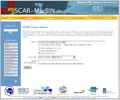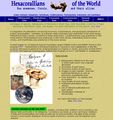Difference between revisions of "Species lists"
(update links) |
|||
| (31 intermediate revisions by 5 users not shown) | |||
| Line 1: | Line 1: | ||
Information about species is important. Knowing what species exist, where and how they live, how they grow and interact, helps us understand patterns of change, and provides better knowledge of how to change our behaviour to support our fragile biodiversity. | Information about species is important. Knowing what species exist, where and how they live, how they grow and interact, helps us understand patterns of change, and provides better knowledge of how to change our behaviour to support our fragile biodiversity. | ||
| − | + | Scientists have so far (2010) described an estimated 1.8 million species of animals, plants, fungi and other organisms. Millions more are believed to exist. Their interactions ensure functioning ecosystems in oceans, freshwater and on land. Many of these may disappear before they have even been named, as climate change, land-use change and other factors take their toll. | |
| − | + | There exist already several “Global Species Information Systems". A “Global Species Information System” aims at gathering and making available information on all known species on earth and which serves as a tool for information and awareness raising for the wider public as well as for enhanced scientific cooperation. | |
An overview of some species lists: | An overview of some species lists: | ||
| Line 16: | Line 16: | ||
Marine and terrestrial: | Marine and terrestrial: | ||
| − | * Integrated Taxonomic Information System (ITIS) (http://www.itis | + | * Integrated Taxonomic Information System (ITIS) (http://www.itis.gov) |
* Species2000 (http://www.sp2000.org/) | * Species2000 (http://www.sp2000.org/) | ||
* Species2000 + ITIS: Catalogue of Life (http://www.catalogueoflife.org) | * Species2000 + ITIS: Catalogue of Life (http://www.catalogueoflife.org) | ||
| + | * Wikispecies (http://species.wikimedia.org/) | ||
==European initiatives for species lists== | ==European initiatives for species lists== | ||
| Line 26: | Line 27: | ||
Marine and terrestrial: | Marine and terrestrial: | ||
| − | * Euromed plant base (http://www.emplantbase.org | + | * Euromed plant base (http://www.emplantbase.org) |
* Fauna Europaea (http://www.faunaeur.org) | * Fauna Europaea (http://www.faunaeur.org) | ||
| Line 32: | Line 33: | ||
Marine: | Marine: | ||
| − | * | + | * https://www.marinespecies.org/rams/ |
* http://www.vliz.be/vmdcdata/narms/ | * http://www.vliz.be/vmdcdata/narms/ | ||
| − | * http://www. | + | * http://www.marinespecies.org/afremas/ |
<gallery> | <gallery> | ||
Image:narms.jpg|'''North Atlantic Register for Marine Species''' | Image:narms.jpg|'''North Atlantic Register for Marine Species''' | ||
| − | Image:masdea.jpg|'''Marine Species Database for Eastern Africa (MASDEA)''' | + | Image:masdea.jpg|'''Marine Species Database for Eastern Africa (MASDEA)''' |
| + | Image:scarmarbin.jpg|'''SCAR-Marine Biodiversity Information Network (SCAR-MarBIN) Webportal''' | ||
</gallery> | </gallery> | ||
| Line 47: | Line 49: | ||
* http://www.algaebase.org/ | * http://www.algaebase.org/ | ||
* http://www.marinespecies.org/porifera/ | * http://www.marinespecies.org/porifera/ | ||
| − | * | + | * https://www.marinespecies.org/turbellarians/ |
| − | |||
* http://nemys.ugent.be/ | * http://nemys.ugent.be/ | ||
| − | |||
* http://www.marinespecies.org/cumacea/ | * http://www.marinespecies.org/cumacea/ | ||
| − | * http://www.marinespecies.org/ | + | * http://www.marinespecies.org/pycnogonida/ |
| + | <gallery> | ||
| + | Image:fishbase.jpg|'''Fishbase''' | ||
| + | Image:algaebase.jpg|'''Algaebase''' | ||
| + | Image:porifera.jpg|'''Porifera World Database''' | ||
| + | Image:proseriata.jpg|'''World database of Proseriata and Kalyptorhynchia - Rhabditophora''' | ||
| + | Image:hexacoral.jpg|'''Hexacorallians of the World''' | ||
| + | Image:nemys.jpg|'''World database of Mysids and nematodes - Nemys''' | ||
| + | Image:cephbase.jpg|'''A database-driven web site on all living cephalopods''' | ||
| + | Image:cumacea.jpg|'''World database of Cumacea''' | ||
| + | Image:pycno.jpg|'''World database of Pycnogonida''' | ||
| + | </gallery> | ||
==Other initiatives for species lists== | ==Other initiatives for species lists== | ||
| Line 65: | Line 76: | ||
Marine: | Marine: | ||
| − | * EurOBIS (http://www. | + | * EurOBIS (http://www.eurobis.org) |
| − | * OBIS Ocean Biogeographic Information System (http://www. | + | * OBIS Ocean Biogeographic Information System (http://www.obis.org/) |
===Systems for global biodiversity information=== | ===Systems for global biodiversity information=== | ||
| Line 75: | Line 86: | ||
==References== | ==References== | ||
<references/> | <references/> | ||
| + | |||
| + | [[Category:Coastal and marine ecosystems]] | ||
| + | [[Category:Marine Biodiversity]] | ||
| + | |||
{{author | {{author | ||
| − | |AuthorName= | + | |AuthorID=8091 |
| − | + | |AuthorName=simon | |
| + | |AuthorFullName= Claus, Simon}} | ||
Latest revision as of 11:47, 6 September 2023
Information about species is important. Knowing what species exist, where and how they live, how they grow and interact, helps us understand patterns of change, and provides better knowledge of how to change our behaviour to support our fragile biodiversity.
Scientists have so far (2010) described an estimated 1.8 million species of animals, plants, fungi and other organisms. Millions more are believed to exist. Their interactions ensure functioning ecosystems in oceans, freshwater and on land. Many of these may disappear before they have even been named, as climate change, land-use change and other factors take their toll.
There exist already several “Global Species Information Systems". A “Global Species Information System” aims at gathering and making available information on all known species on earth and which serves as a tool for information and awareness raising for the wider public as well as for enhanced scientific cooperation.
An overview of some species lists:
Contents
Global initiatives for species lists
Marine:
- Marinespecies.org (http://www.marinespecies.org/)
- SeaLifeBase (http://www.sealifebase.org)
Marine and terrestrial:
- Integrated Taxonomic Information System (ITIS) (http://www.itis.gov)
- Species2000 (http://www.sp2000.org/)
- Species2000 + ITIS: Catalogue of Life (http://www.catalogueoflife.org)
- Wikispecies (http://species.wikimedia.org/)
European initiatives for species lists
Marine:
- European Register of Marine Species (ERMS) (http://www.marbef.org/data/erms.php)
Marine and terrestrial:
- Euromed plant base (http://www.emplantbase.org)
- Fauna Europaea (http://www.faunaeur.org)
Regional marine initiatives for species lists
Marine:
- https://www.marinespecies.org/rams/
- http://www.vliz.be/vmdcdata/narms/
- http://www.marinespecies.org/afremas/
Species-specific initiatives for species lists
Marine:
- http://www.fishbase.org
- http://www.algaebase.org/
- http://www.marinespecies.org/porifera/
- https://www.marinespecies.org/turbellarians/
- http://nemys.ugent.be/
- http://www.marinespecies.org/cumacea/
- http://www.marinespecies.org/pycnogonida/
Other initiatives for species lists
Information pages by aggregating all known data about every living species
Marine and terrestrial
- Encyclopedia of Life (EoL) (http://www.eol.org/).
- WikiSpecies: (http://species.wikimedia.org)
Systems for biogeographic information on marine organisms
Marine:
- EurOBIS (http://www.eurobis.org)
- OBIS Ocean Biogeographic Information System (http://www.obis.org/)
Systems for global biodiversity information
Marine and terrestrial:
- GBIF Global Biodiversity Information System (http://www.gbif.org/)
- Biodiversity Heritage Library (BHL) (http://www.biodiversitylibrary.org
References
Please note that others may also have edited the contents of this article.
|











